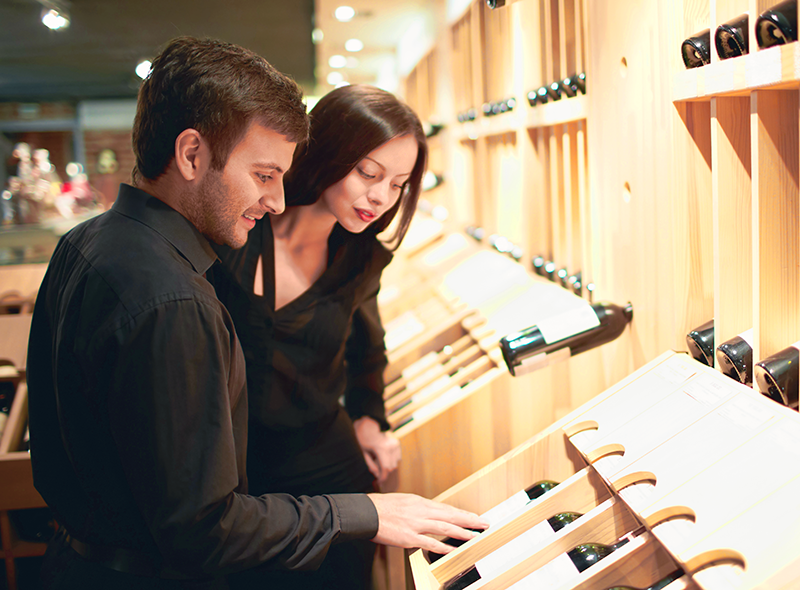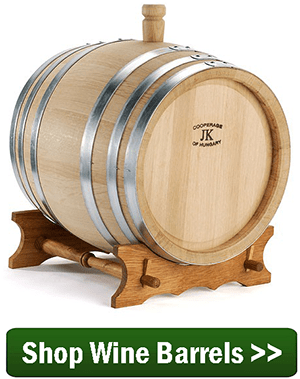 Let’s clear some things up. In general, wine does improve with age… but only to a point. Like many facets of life, there always seems to be some misinformation that makes its way to the realm of common knowledge. This seems to be the case with the myth: the older the wine the better it tastes.
Let’s clear some things up. In general, wine does improve with age… but only to a point. Like many facets of life, there always seems to be some misinformation that makes its way to the realm of common knowledge. This seems to be the case with the myth: the older the wine the better it tastes.
Different wines age differently. Some wines age gracefully for 10 or 15 years. Other wines show improvement for a year or two and then plateau. Then there’s that very small group where no aging at all is ever going to do any good: might as well drink it now, because it ain’t gettin’ any better.
While all wines do vary in the way they age, one thing that is common among them all is that they each wine has its own life cycle. This fact can be partially surmised just by taking notice of the descriptors used to describe the aging qualities of a wine.
For example, a newly bottled wine is called young. Then later after some aging characteristics become evident, the same wine might be called mature. Then if the wine is not drank and left to set beyond its prime, one might refer to it as fallen-over.
Words like: young, mature and fallen-over, should give you a good sense as to how a wine goes about progressing through life. It improves for a period of time, just like everyone expects. Then it peaks in quality. Then it eventually declines. It’s the “decline” part that fails to make it into the realm of “common knowledge.” With each passing year the wine is actually becoming worse instead of getting better.
A wine doesn’t necessarily fall-over over night, but it will do so slowly over an extend period of time. For a big wine that has taken 5 or 10 years to peak in quality, we may be talking about a decline over several decades. For a wine that has peaked in a matter of a few month, we may talking about a decline over 2 or 3 years. Regardless, it is good to understand that:
There comes a time in any wine’s life
when it is begging to be drank!
 This older-the-wine-the better myth has partially been perpetuated by the wine industry itself, although not intentionally. Many wines go up in price as they become older. This gives the perception that it is worth more because it is becoming better. With each passing year you can see the price of many vintages going higher and higher. In reality, this has less to do with the wine becoming better and has more to do with the wine becoming rarer.
This older-the-wine-the better myth has partially been perpetuated by the wine industry itself, although not intentionally. Many wines go up in price as they become older. This gives the perception that it is worth more because it is becoming better. With each passing year you can see the price of many vintages going higher and higher. In reality, this has less to do with the wine becoming better and has more to do with the wine becoming rarer.
If a certain vintage has been deemed to have aging potential, wine collectors will gravitate towards it and deplete its inventory level on the open market. When this happens it then becomes a simple issue of supply-and-demand. The fewer bottles left, the higher the price that can be commanded for that particular vintage.
The point here is: don’t judge a wine by its age. While wines do get better with age, they can also get worse.
—–
Ed Kraus is a 3rd generation home brewer/winemaker and has been an owner of E. C. Kraus since 1999. He has been helping individuals make better wine and beer for over 25 years.

I have been making red wine from kits for about a year. Most kits say they are ready to drink in 3 months. Will they improve with age? Can they go for a year or two? When is the best time to drink them. I have done a temprnaillo, Super Tuscan, Zinfandel, Syrah and a Amarone. None have reached a year. Can you please advise.
As I understand it and experienced it, kit wines are designed for quick making and quick drinking. Although they can improve with age, that is not really likely. You could experiment with some by taking (say five from each batch) and set them away for say one, two, four, six and ten years and come back to them after that time and see how they have done.
The answer is different for each type of wine, but in general, your heavier Tuscan and Amarone should continue to improve for up to a year, if not two. Then the improvement will plateau for several years. This is the time for optimal drinking. With the Zinfandel and Syrah it’s a similar, story just a little shorter time.
Richard, the only way a bottle of wine will receive oxygen, is if it is corked with natural or synthetic cork and not waxed. Neck capsules are okay. The amount of air controls the rate of aging. Wines that age quickly are screw-capped.
My way is to taste the wine during periods of aging. As it seems to get better, I will consume more keeping one or two bottles for a longer period.At some point the wine will be "over the hill" and I keep the last one as a momento for that year.
We make our wine from kits and use synthetic corks. We find that we have to wait about 6 months for whites, and a year for reds before we really enjoy the taste. We rarely keep a bottle over two years – mostly because we have wither drunk it or given it away by then. BTW, I also add some tannin to our reds because from the kit they seem a bit too smooth and need a bit more bite. That may extend the time to maturity as well.
I took a 1993 Cab from the Paso Robles area to a party a couple weeks ago, and the best description given by the people was that is was lucious. Obviously, in an almost 20 year old wine the tannins had since disappeared, and it was so incredibly smooth. So, there are 20-25 year old wines out there that are excellent .
Got a question as for aging, I have read that a bottle of wine will take in oxygen whle aging. Now I am confused on this, if you wax the cork or use a screw cap, how can it take in oxygen?
Is there a general rule on how long fruit wine should age once bottled, In the process of making cranberry and not sure how long to wait once bottled.
thanks
Jake, I would say when making wine from fresh fruit, aging the wine for at least 6 months is a good rule of thumb to follow.
This year I made 5 gallons of elderberry wine. I went through the process as outlined in the directions, when we bottled it, the wine had a great color and very clear. Now I have noticed that when you look at the bottle of wine in the light, it has sediments floating around in the bottle. What would cause this. It has been ageing for about 7 months.
Les, what it sounds like is that you are experiencing acid precipitation. A wine can only hold so much of any one particular fruit acid in the solution. What the wine can’t hold will eventually form as crystals in the wine. The article below will discuss this in more detail as well as tell you how to treat the wine.
Acid Precipitation
http://www.eckraus.com/blog/wine-acid-crystals-precipitation
As a file of thought, fruit with wines , process, bottle and let sit for 6 mos. ,Then start tasting and enjoy.
Before it’s starts to flatline.